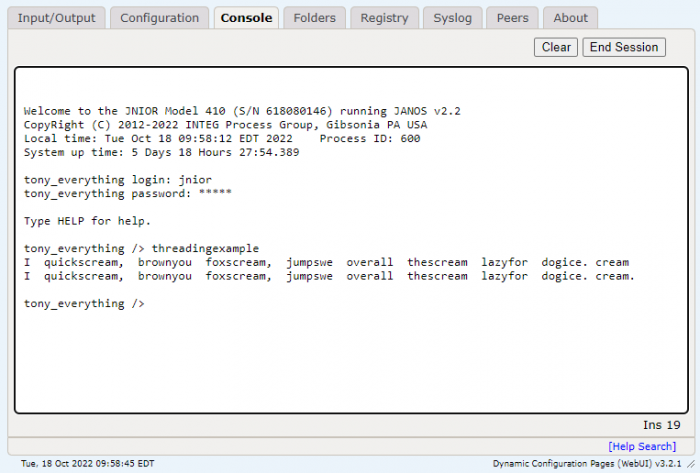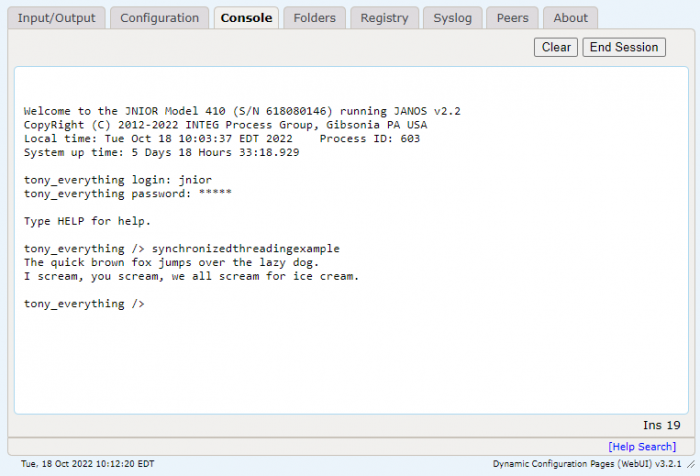Threading Overview
There could be a want for an application that performs different functionality, completing multiple operations at the same time. The JNIOR accomplishes this with threading. A thread is a sequence of instructions within a program that can be executed independently of other code. The JNIOR is able to handle threading via the default JAVA library. Below are two quick examples of threading, with one of them using synchronization.
Non-Synchronized Threading
In this first example, there is a main method that creates two threads, each supplying it an array of words that will be used to create sentences and print them out. Each new thread calls a function called slowStringBuffer, taking the words in their string array’s they’ve been supplied and adding them to the string buffer in that function. Since the threads run at the same time, they add their words to the string buffer simultaneously. This results in nonsense being printed out for the sentences, showing that synchronization in our next example is useful in avoiding this issue.
View on GitHub
I put the built jar file of this example application into the JNIOR’s flash folder and ran it from the Web UI’s console tab. As you can see it, the threads compete against each other to build their sentences, resulting in nonsense being printed out.

Synchronized Threading
In this second example, the only change that is made is that the slowStringBuffer function is made synchronized. This results in one thread taking control first, making sure it prints out its sentence completely before the next thread can start its sentence. This results in two complete sentences being generated.
View on GitHub
I put the built jar file of this example application into the JNIOR’s flash folder and ran it from the Web UI’s console tab. In this example two complete sentences are formed and printed.
